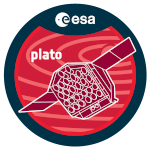Precise host star characterisation is imperative to our understanding of the diversity and architecture of exoplanetary systems. However, most host stars undergo heterogeneous characterisation at the time of planet discovery or analysis. We present a homogeneous analysis of ~100 stars hosting small planets with Rp < 4R⊕. The planets border or sit in the radius valley - a dearth of planets with radii between ~1.5 and 2 R⊕ - and also have planet mass measurements available. Characterisation is done with the Bayesian Stellar Algorithm (BASTA), using photometric, spectroscopic and astrometric data inputs from Gaia DR3 and
2MASS. These results are validated in comparison to stellar parameters from the Nasa Exoplanet Archive, and homogeneous spectroscopic subsets of exoplanet host stars such as the Kepler California Survey, and SweetCat.
We use these new stellar parameters to recalculate planet masses, radii and densities, and compare these to values reported in the literature. A difference in the depth of the radius valley is reported, alongside analysis of the differences in 2-D distributions of planets in radius - period and radius - stellar mass space. The implications for the planetary mass - radius diagram are also explored, showing shifts of the positions of these planets in such parameter space. We conclude by recommending a similar homogeneous approach for all host star characterisation.

 PDF version
PDF version
